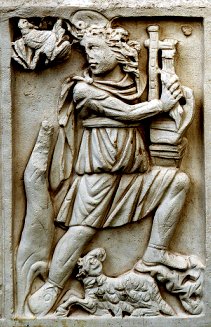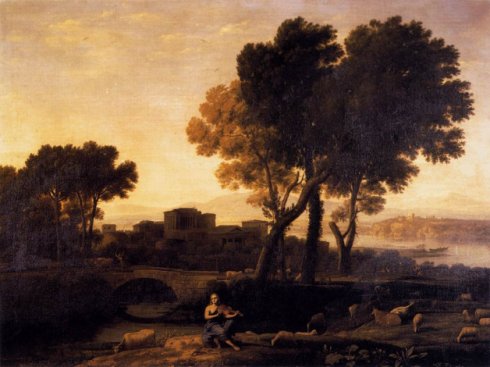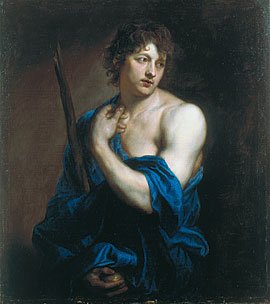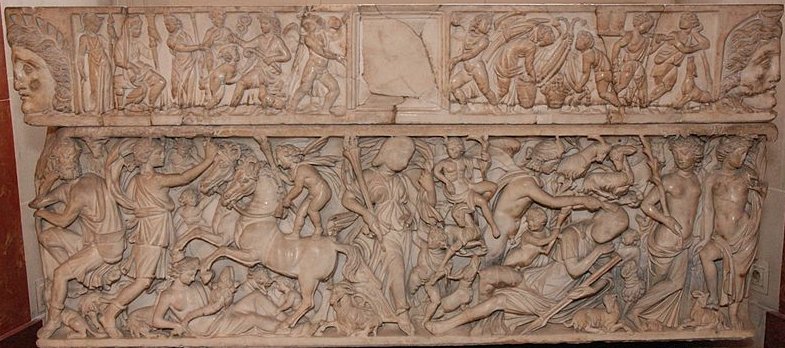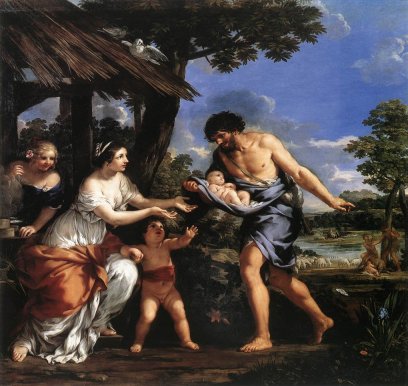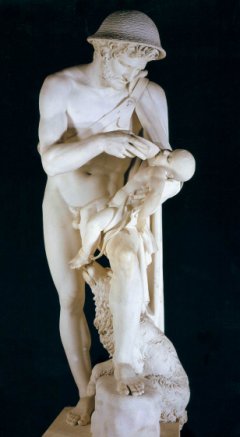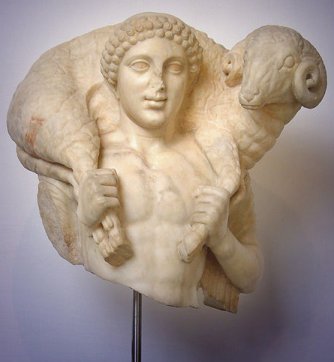|
The shepherd in mythology |
|
The shepherd is a powerful mythological figure. Perhaps the earliest example comes from the four thousand year-old Epic of Gilgamesh, in which a primitive man, Enkidu, is 'civilised' by wise shepherds. Shepherds are central to Greek and Roman mythology: Orpheus, Apollo, Pan, Paris, Endymion, all spent time looking after sheep. The image of Orpheus as a shepherd (below left) comes from a Roman sarcophagus in Ostia. Claude Lorrain's picture (below right) shows Apollo keeping the sheep entertained. We will have more to say on Orpheus when we look at early images of Christ as the Good Shepherd. Do sheep enjoy a good tune? I've no idea. |
|
|
|
|
| The soulful looking
chap (below ) is 'Paris as a Shepherd' by van Dyck. This is an unusual image
of Paris. Usually he is shown making his judgement, picking his
favourite out of three attractive naked women. I wonder why that's such
a popular theme? |
|
|
|
|
|
The story of the shepherd Endymion is a rather odd one. Having
fallen in love with the good-looking shepherd, the
goddess Selene (or Luna) asked Zeus to send him to sleep on a permanent basis. She then
visited the
sleeping Endymion, which resulted in her giving birth to fifty daughters.
(But he was fast asleep - so how did that work?) |
|
|
|
|
| A familiar type-scene from classical mythology involves potential heroes such as Oedipus, Paris, and Romulus and Remus being abandoned in babyhood then discovered and brought up by shepherds. |
|
